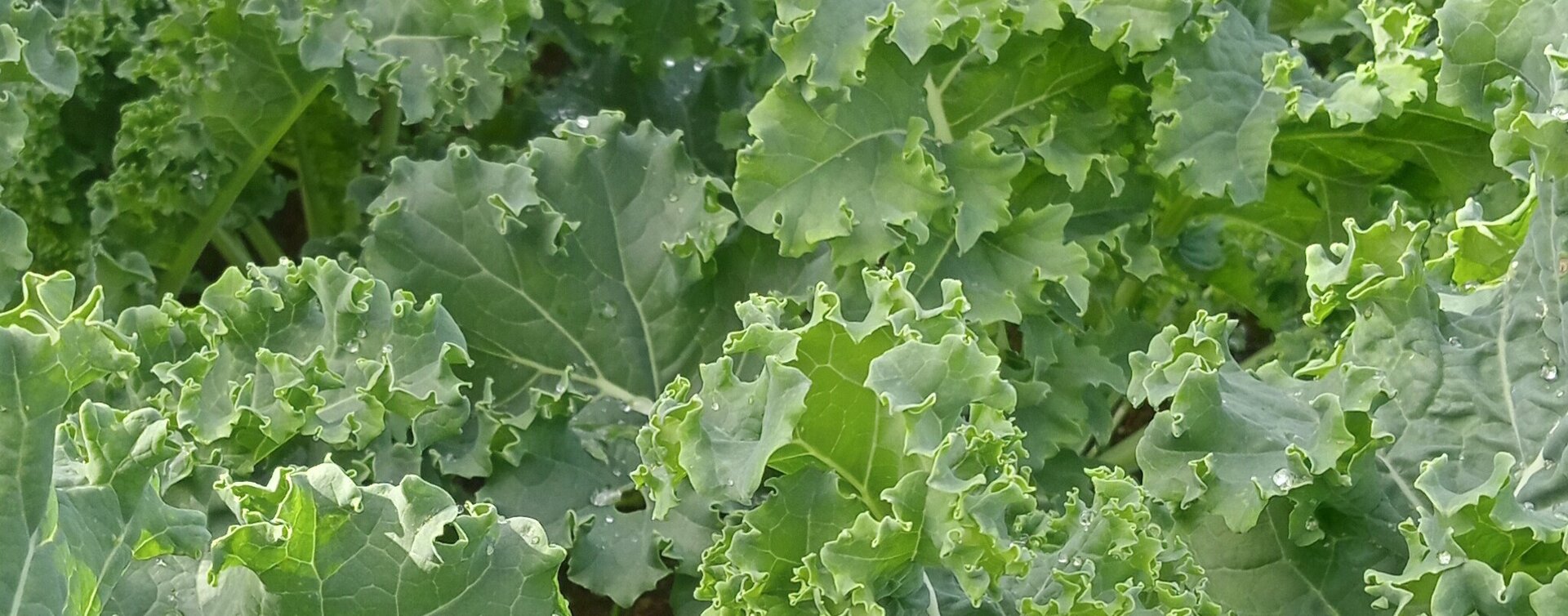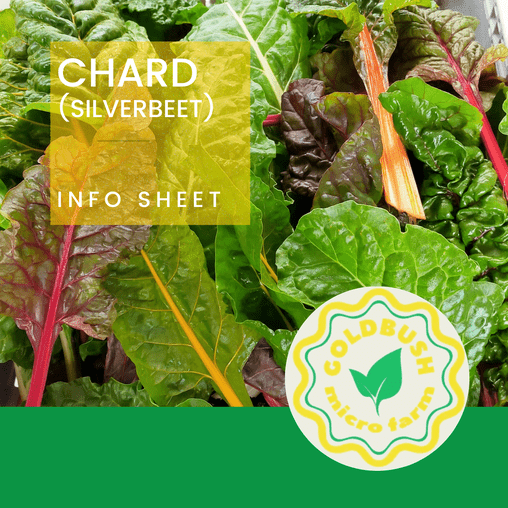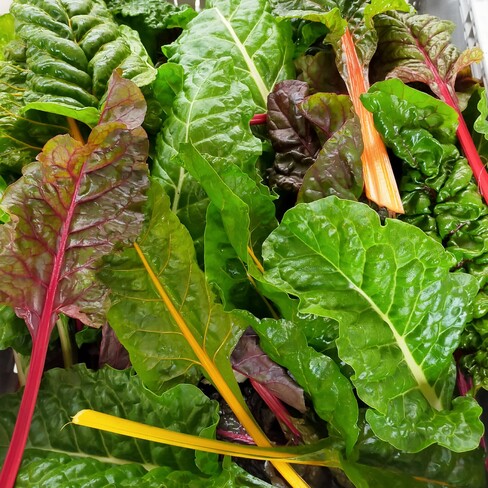6 ways with Chard you'll love to share
Hey there, fellow food enthusiasts! Get ready to embark on a vibrant culinary adventure as we dive into the wonderful world of Rainbow Chard.
Now, I know what you might be thinking: "Another leafy green? What's so special about this one?" Well, let me assure you that Rainbow Chard is anything but ordinary!
In this information booklet, we've compiled everything you need to know to make the most of this versatile and nutritious veggie.
From handy tips on storing, preparing, and freezing, to creative ways to use those gorgeous chard stems and a collection of mouthwatering recipes, we've got you covered.
But hey, we're not stopping there. We'll also guide you through the art of pairing Rainbow Chard with other ingredients and offer a list of suggested uses that will surely spark your culinary creativity.
The information found below (and available as a downloadable PDF) will give you confidence to incorporate Rainbow Chard into your meals.
No more leafy green boredom here!
Whether you're a seasoned chef or a kitchen newbie, we believe that this booklet will inspire you to explore new flavors, textures, and cooking techniques with this fantastic vegetable.
So, without further ado, let's delve into the treasure trove of information below. Get ready to unleash your inner chef and let Rainbow Chard shine in all its colorful glory.
Click on the picture to see the booklet, otherwise scroll down to read the info.
Chard Info Booklet:
We love the colours of Rainbow Chard here at Goldbush, also known as Swiss chard or silverbeet, they have expansive, pocketed leaves with stems in a spectrum of colors: red, orange, white, pink, green, and yellow. Chard is actually in the beet family but doesn't develop a bulb. Its leaves are more tender and delicate than other greens. Eat small leaves raw in salads and blanch or steam larger leaves. You can freeze chard for recipes later.
How to store:
ATTENTION: HIGHLY PERISHABLE. Store chard in a plastic bag in the fridge for up to a week. For longer storage, you can store them in a jar of water (change water daily). Try to eat this veggie early on, as the leaves will limp out on you quickly!
Preparing your Chard:
Wash leaves to remove grit. Remove the thicker stems by folding the leaves down the center and cutting out the stem. Stack several leaves on top of each other and slice into 2cm wide ribbons. You can chop and use the stems for stir-fry, soups, or wherever you use celery.
Pairs well with:
Balsamic vinegar, lemon juice, crème fraîche, goat cheese, garlic, bacon.
Substitutes:
Spinach, beet greens, kale, rocket, collards, radish greens, broccoli leaves
Best Uses:
Raw in a salad
Soup
Wilted in pasta skillet meal
Quiche or Frittata
Pesto
Braised
Stuffed Leaves
Dip
DIY Veggie Broth
Smoothie
Sautéed
Lasagna
Juice
Pizza Topping
Gratin
Stir Fry
Pickles (Stems) Roasted (Stems)
How to Freeze:
Blanch leaves for 2 minutes in a pot of boiling water. (Blanch stems separately for 3 minutes). Place leaves and stems in ice water for 2 minutes. Use a strainer to fish out the leaves. Dry leaves by placing them on a towel. Roll it up and squeeze to remove excess water. Quick-freeze small clumps of chard individually on a baking tray. After they’re frozen, place clumps into freezer bags in bulk. Remove as much air as possible from bags before sealing.
Chard ribs and stems are crisp and thick, almost like celery. They should be cut out and cooked separately in many cases. They can be used anywhere you use celery.
So don’t throw those stems in the compost!
Here are 6 ways you can cook with them:
Quick pickles: These pickled chard stems are spicy, sweet, acidic, and especially pretty when made with rainbow chard. Store in the fridge.
Soup: Throw them in with the onions and carrots in place of celery. The crisp stem will create great flavor.
Dip: Swiss chard stalks and tahini can be combined in a
Middle Eastern dip similar to baba ghanoush.
Vegetable stock: Toss the stems in the freezer alongwith other vegetable scraps. When you've collected enough, make an easy vegetable stock.
Roasted: Yup! This popular vegetable rescue strategy works for the stems too. Just toss with olive oil and salt and put them on a roasting pan.
Stir Fry: Crispy texture makes them perfect for a quick stir-fry.
Garlicky Chard
Ingredients:
1 bunch chard, stems separated and finely sliced (or used in another recipe)
1 Tbsp olive oil
2 garlic cloves, minced
Large pinch crushed red pepper flakes
Salt
Directions:
Stack chard leaves on top of one another (you can make several piles) and slice them into 1cm strips.
Heat oil in a frying pan. Add chard stems, garlic and red pepper flakes and sauté for 30 seconds, until garlic is fragrant. Stir in the chard leaves, coating it in oil. Cover pan and let cook for about 2 minutes, until chard is wilted. Uncover, stir and cook for 2 minutes longer. Season with salt.
Alternative: Don't use pepper flakes and add zest of 1 lemon at the end when seasoning with salt.
For more recipes click on the picture below to download the full ebook and print if you like.
If printing skip the ink heavy first page.


